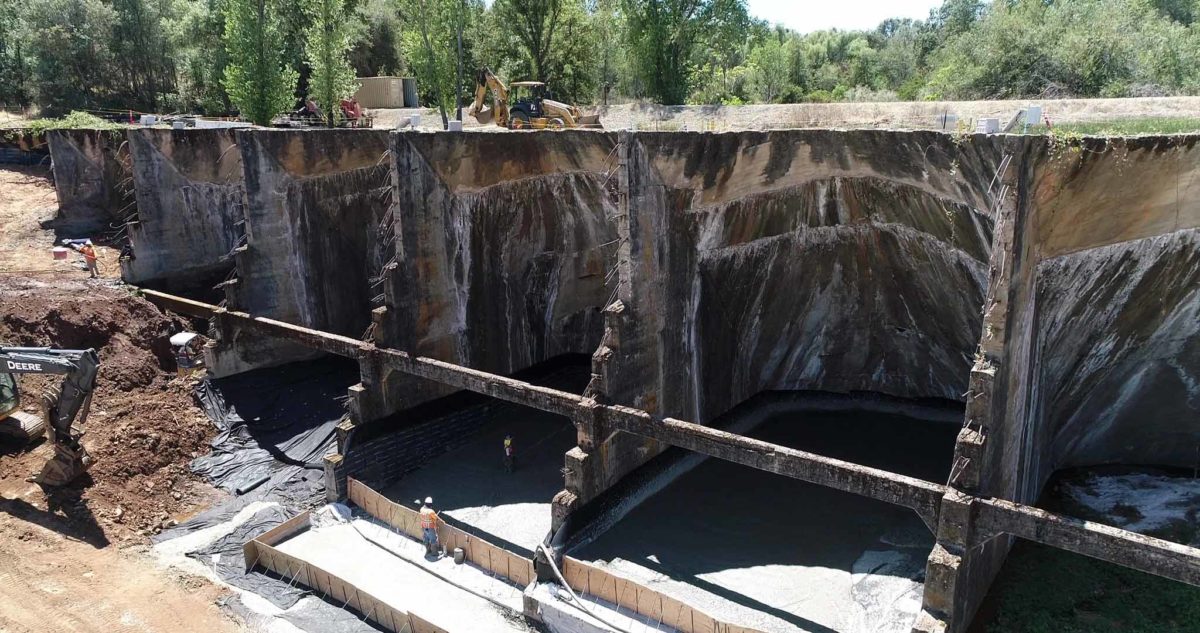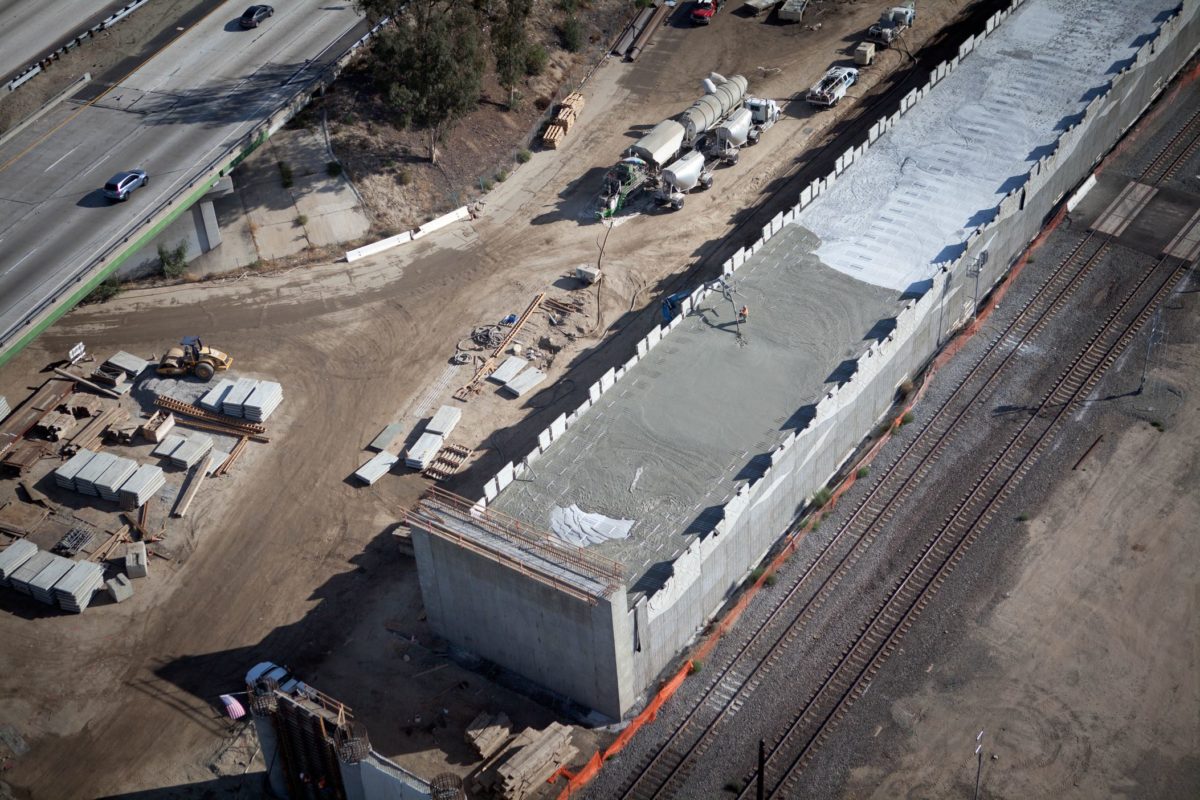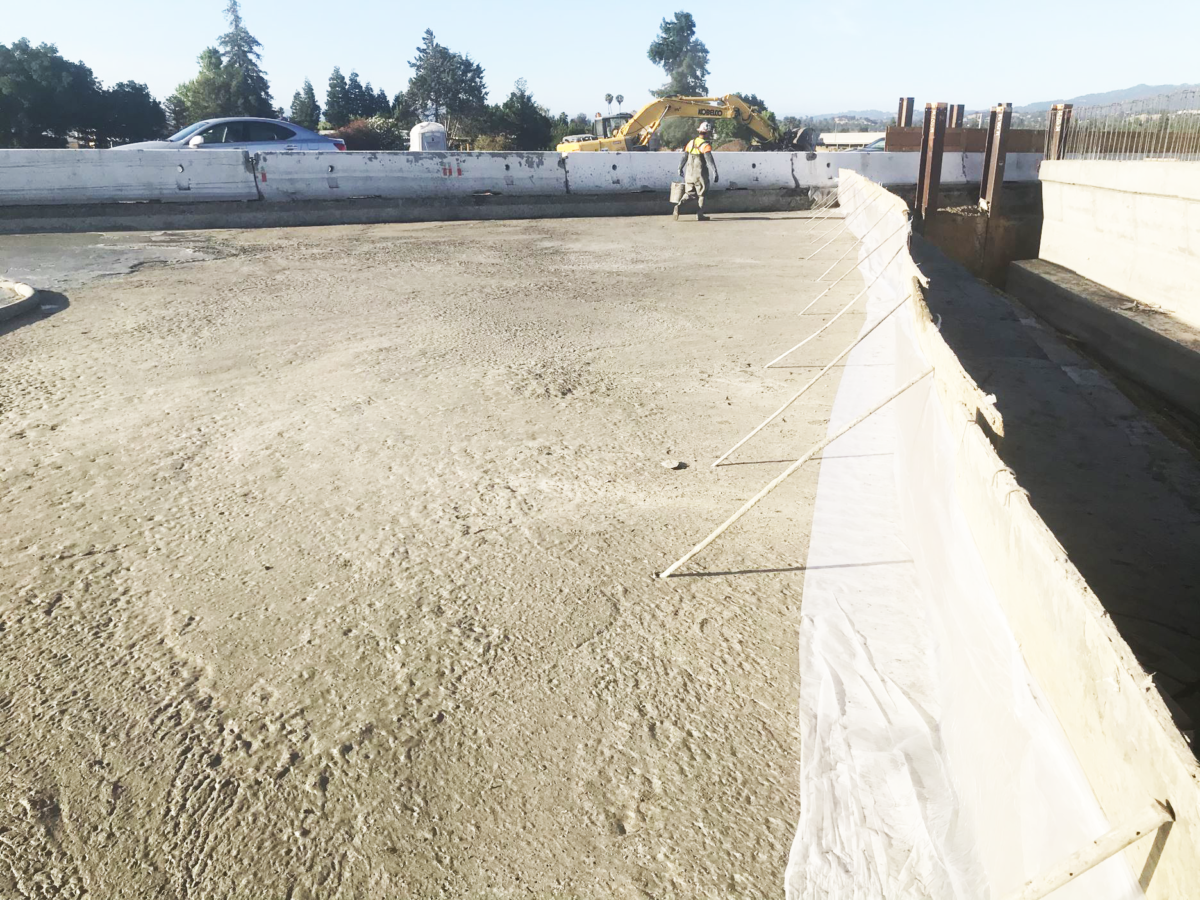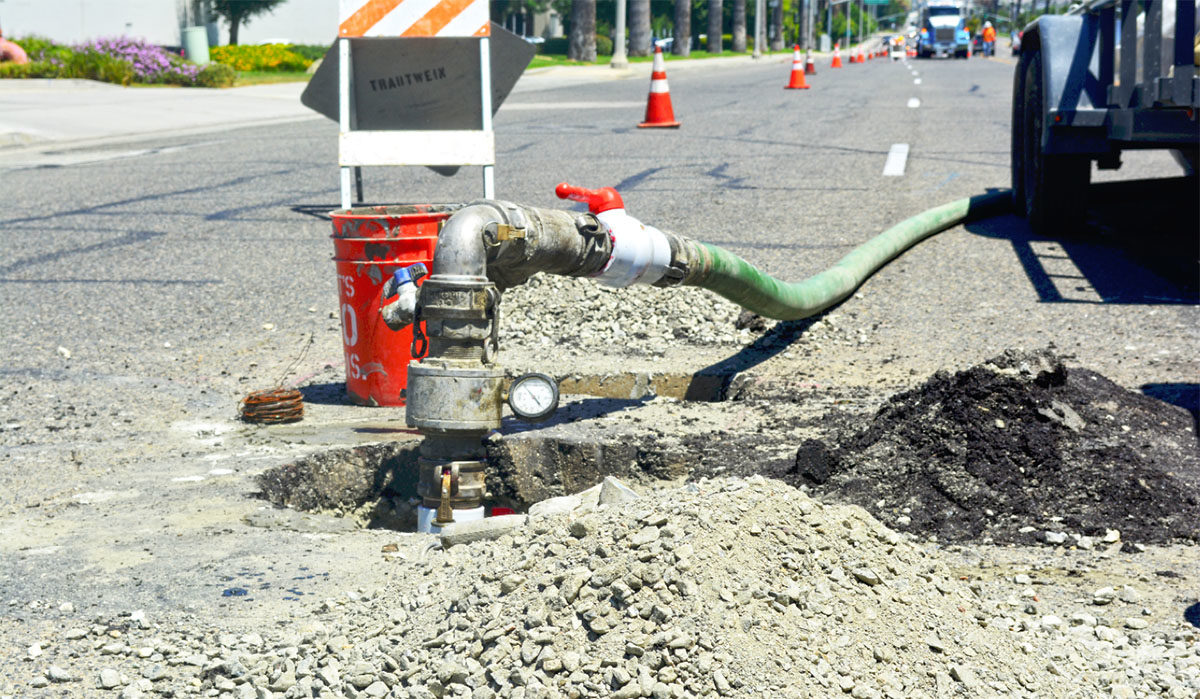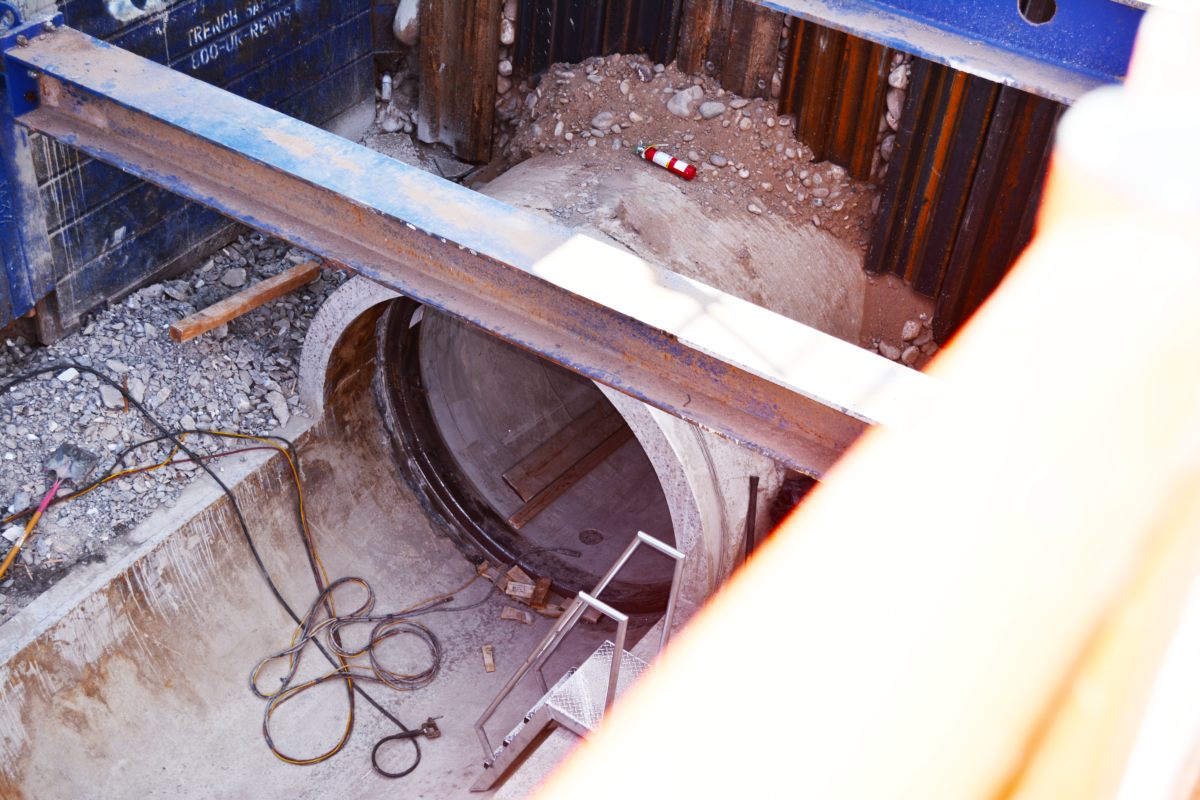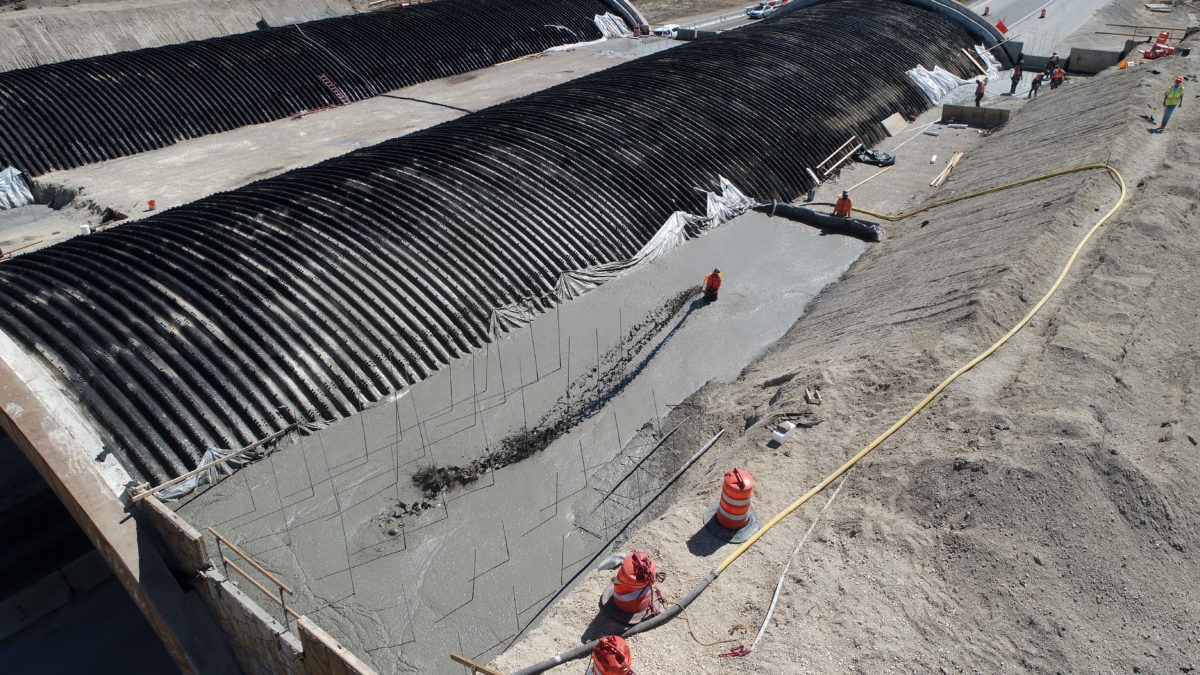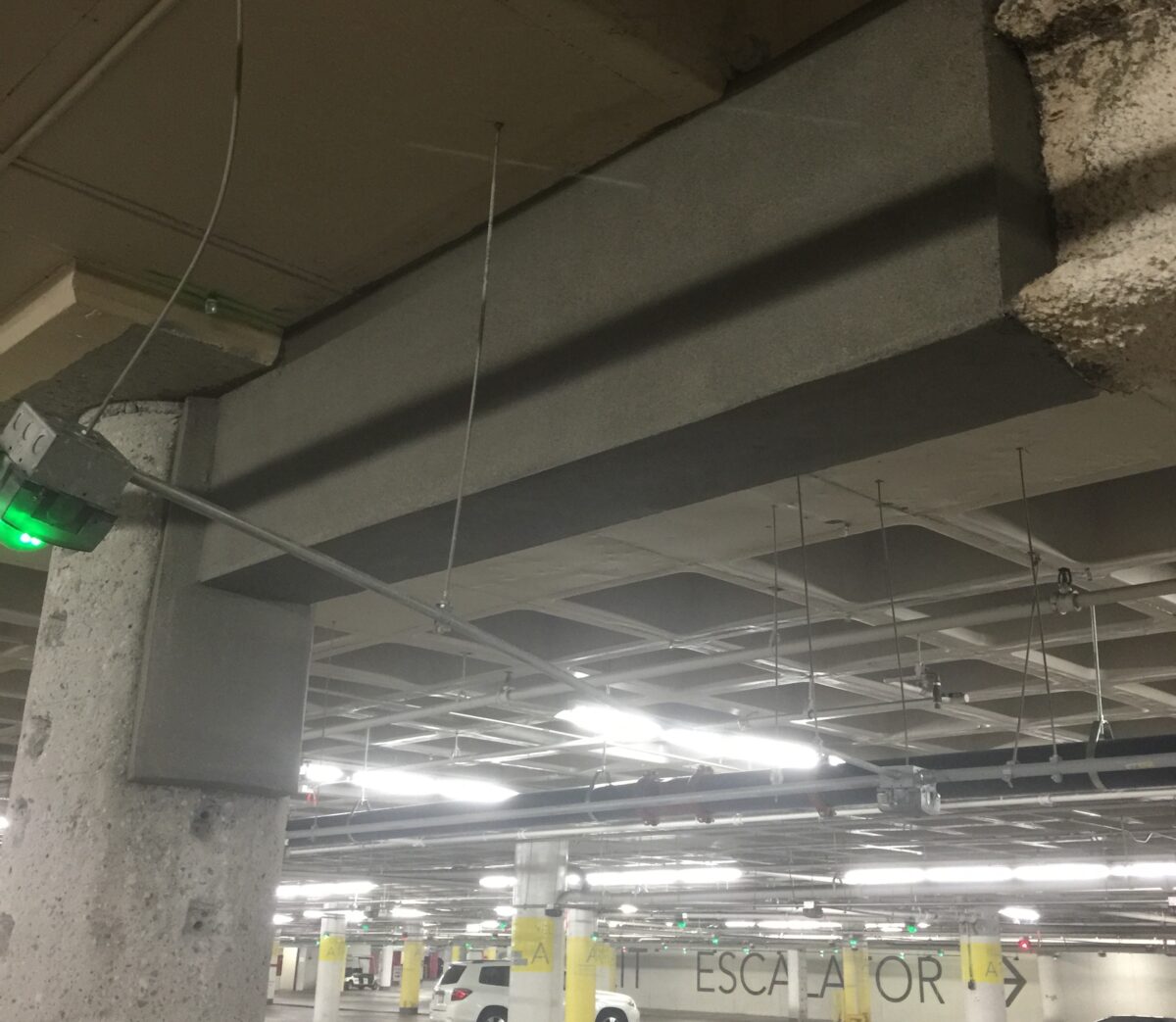Argonaut Dam, Jackson, CA
About The Project
PROJECT LOCATION
Jackson, California
CLIENT
Department of Toxic Substance Control
After analysis of the 100-year-old dam structure, the US Army Corps of Engineers determined the structure was not suitable for continued use as a dam and had to be retrofit immediately. The site was at high risk for water contamination due to mining activity leaving carcinogens in the soil behind the dam. Arsenic, mercury and lead were found in high quantities in the area behind the dam, and the project was handed off to the Department of Toxic Substance Control to develop and implement a solution.
The Solution
Because of the structure’s age and condition, the dam couldn’t accommodate heavy construction activity around or on top of the site. An earthen dam was chosen with lightweight cellular concrete (LCC) determined to be the best solution due to its self-compacting properties and the strengths achieved by the material as backfill. The hillside and staging area was a logistical challenge. Moving equipment in and out required a small batch plant instead of a large stockpile area required for traditional fill. Dust control was crucial and tightly managed due to the contaminated soil on the site.

